The giant betta fish (Betta anabantoides) is a type of freshwater ray-finned fish in the Macropodusinae subfamily, part of the gourami family. It is native to southern Kalimantan, the Borneo region of Indonesia. It is present in several river habitats and is a paternal mouth-broader. Giant bettas are well deserving of their name to their size. The appearance of the Betta anabantoides was the result of hard work and cautious, selective breeding. In 1999, Team giant created the first giant plakat through plakat betta fish.
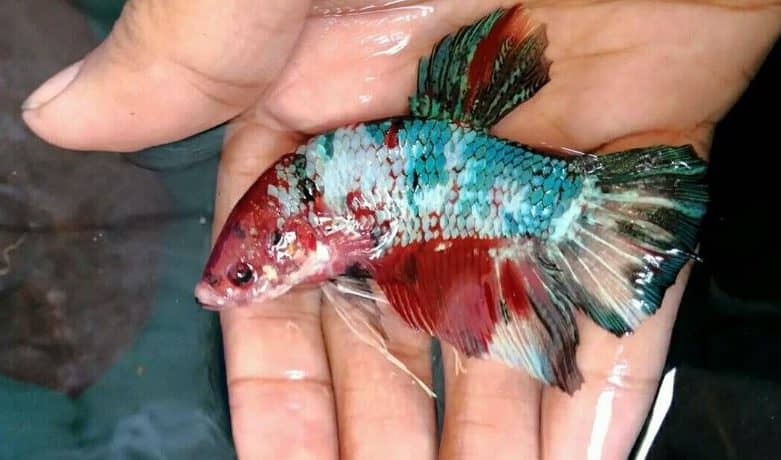
The target is betta fish which reach at least 3 inches in length. But now there is evidence that they can grow to 5 to 7 inches long. They have also given rise to considerable controversy in the hobby. But Betta fish enthusiasts are some who are divided as to whether or not they believe that betta giantism is caused by a single gene.
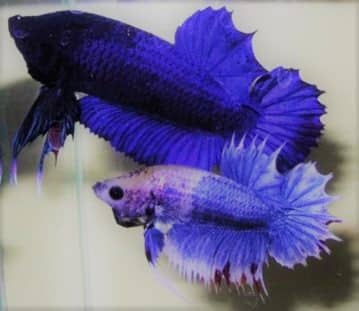
Simply the result of careful selective breeding for increased size. The reality may well be a mixture of the two at the end of the day. We know for a fact that significant bettas can be bred simply by selecting the largest fish to breed over successive generations.
Nevertheless, experiments conducted by Dr. Gene Lucas when giants first appeared they suggested that a partially dominant gene could generate the giant variation. As betta fish inheriting one copy of the ‘ giant gene ‘ grew larger than normal betta fish (so-called ‘ half-giant betta ‘) and betta fish carrying two copies of the gene became giants
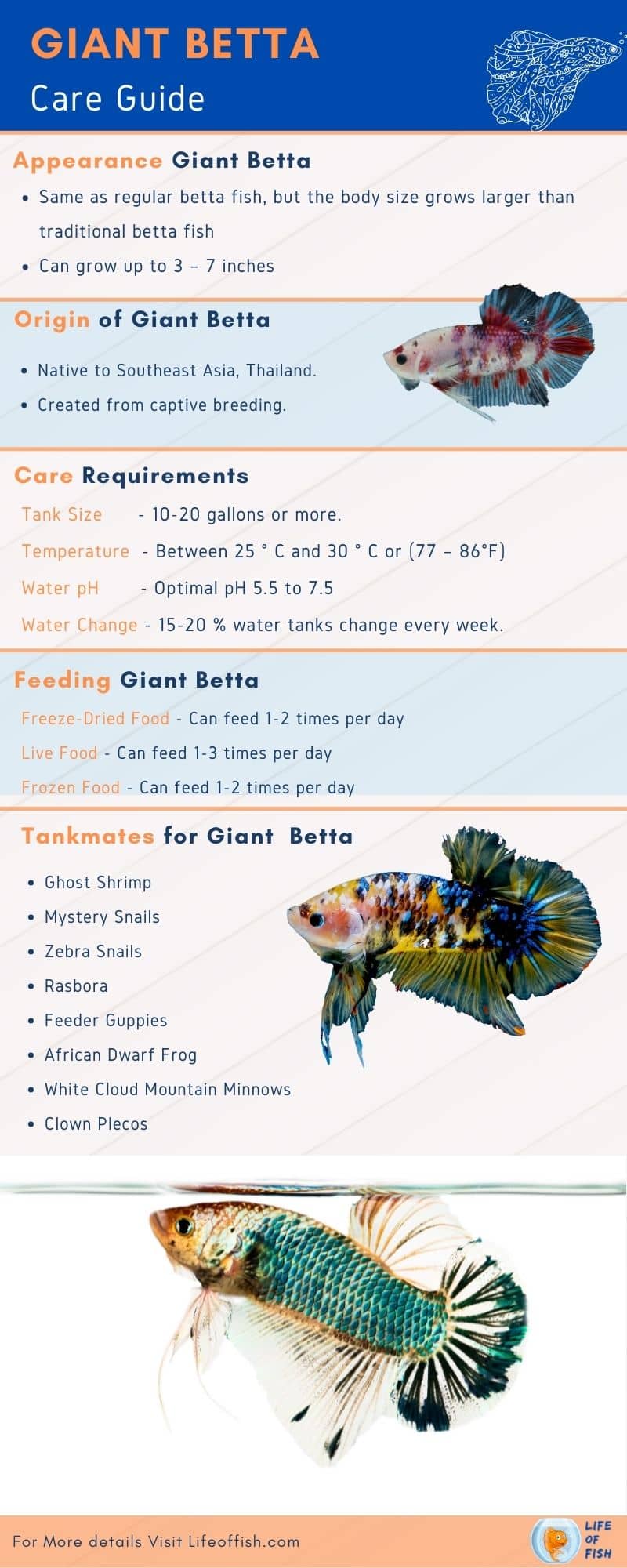
What is a giant betta fish?
Jump To
They are the same as regular betta fish (betta splendens), but the body size grows larger than traditional betta fish. They can grow up to 3 – 6 inches in general. But I have seen this fish that is 7 inches long. Brooders of this fish have used a selective breeding process when creating this marvelous fish.
How Fast Giant Betta Grow
Their fry is estimated to develop at a much faster rate than normal betta fish fry, needing much more food to reach its full potential. As a result, giant-normal size differences are clearly noticeable from just a few weeks old.
Young giants will be adults by 2-3 months old with proper food and conditions. So by 4 months old, they will be the size of your typical 8-month-old show betta fish.
As long as they are 7-8 months old, giants can reach at least 3 inches long. At about 6 months of age, the differences in body type are evident.
Finally, at a year old, they stop growing, but until they are around 18 months old, the fish can continue to put on width and weight.

Giant Betta Lifespan
Giants usually can have shorter lifespans because of poorer immune systems and are vulnerable to bacterial infections, so the lifespan of giants is considered to be short on average. But if you give good care the life expectancy goes up to 3-5 years.
Giant Betta Keeping Tips
With good care some giant betta strains will reach a length of three inches in a few months (including the caudal fin). The Giant Betta accepts quality flakes but prefers to consume live or frozen food. When grown-up, giants need less food. But, still able to eat more than twice as much protein as normal betta fish requires on a daily basis. Remember when you care, giants should be kept in larger containers than regular betta fish and receive more frequent water changes. Because of the increase in waste produced as a result of consuming a high amount of food
Read more on betta fish care How Long Can a Betta Fish Live In a Fishbowl Without A Filter ? Know All
Are Giant Bettas Aggressive?
Yes, sometimes this fish can be adhesive. It depends on the individual fish. To look more impressive, male and female king bettas flare or puff out their gills to scare rivals or attract mates, as well as when they’re startled. They are not ideal for a typical community tank due to their aggressive nature, particularly towards fish species with long, flowing fins. All betta fish, also in solitary tanks, need a place to hide occasionally. They can set up a territory that they will guard aggressively, based on a plant or rock. Avoid keeping two male betta fish in a small tank. They will fight to death.
Giant Betta Care
Care for Betta fish is not a hard task. But you need to consider a few main things when caring for a giant betta tank. Hold Giant Betta in a tank with a lot of plants and a lot of hiding places. They prefer soft, slightly acidic, low-flowing water. Giants are a friendly species and the male can grow up to 5 inches in length. Fish are fairly easy to care for, but still require high water quality, as do all fish species, to ensure that they have an appropriate filtration system and that frequent changes in water are made.
Tank Size for Giant Betta
They need at least a 10-gallon aquarium or tank, but bigger is always better because they like to move around a lot. If you put them in a too-small aquarium or tank, they will never reach their full size. Always select a tank with enough space for them and not too deep. Some people keep them in a 5-gallon tank. But it is not recommended. You need a bigger tank to keep this beautiful fish.
Recommended Water Quality For Giant Betta
| Parameter | Optimum range |
|---|---|
| pH in water | 5.5 to 7.5 |
| Hardness in water | 0 – 214.29ppm |
| Temperature in water | 25 – 30 °C (77 – 86°F) |
| Tanks Size in water | 10 gallons minimum |
Water quality requirement : if you need more advice about the giant betta care we have a free guide.
Breeding
The giant characteristic is heritable and seems to be codominant for now. Simply put, if you raise female giant betta and male giant betta together, all offspring will be giants (although their final adult size will vary).
If you mate a giant to a regular beta. Then the offspring will carry the giant gene and as a result, will grow to an intermediate size between the normal and the giant. Such fish are called ‘half-giants’. When you breed two carriers together it will give you 25 percent full-giants, 50 percent half-giants, and 25 percent normal bettas.
Male and female fish identification
When it comes to identifying bettas male and female, there are two main things you can look for: the size of their gill covers (the tissue on top of their gills) and the shape of their dorsal fin.
The size of the gill covers will vary depending on what gender your bettas are, but generally speaking, males have longer gill covers than females do. If you’re not sure which gender your fish is, simply turn them upside down—if they have a small, almost-invisible patch of white tissue on top of their gills, it means he’s a male!
The shape of his dorsal fin also varies between sexes: while the female has more rounded dorsal fins that curve slightly forward, male dorsal fins are much sharper and point straight out from just below his eyes.
Breeding bettas are similar to every betta species. You can find more details on how to breed bettas in here
Feeding
Betta Fish Giant consider as carnivorous fish. They live in South East Asia, where small insects and larvae make up the vast majority of their diet. The meat they normally eat is going to be high in fiber and protein. The insect they consume also contains nutrients from the food they have consumed in their stomachs.Keep in mind they do not eat plants.
If you were going to let your betta live off of plants in your tank, that is the worst feed you can give them. That being said, the odds are in the wild, they may sometimes consume plant life, but for them, there will be almost no nutrition.
Read more on Freeze-Dried Food , Live Food , Frozen Food , How to feed Frozen Food, When to feed Frozen Food
How much to feed a giant betta?
In my experience, 8 to 10 pellets for one fish is enough if you provide them once a day. If you feed 2 times a day, 5 pallets for one feeding round would be enough. But this fish will require more food than regular betta fish because of their large body size. But keep an eye on their stomach while feeding; don’t let the stomach bulge too much because you can overfeed them. They have a big appetite especially providing them live food. So as I told you earlier, keep an eye on their stomach.
If you go out for a couple of days, instead of adding more to the tank, let the fish go without food. Ensure the feeding schedule is regular, and don’t worry if the fish doesn’t eat when stressed Bettas can go without food for up to 14 days before they die.
Giant Betta Constipation Solution
Adult fish are susceptible to constipation. Which, if not properly handled, can lead to death. Live brine shrimp and live or frozen daphnia should be made a daily feeding scheme because both these foods serve as a mild laxative.
Similarly, applying Indian almond leaves or leaf extract to the water of a giant betta fish is a good idea. The best treatment if the giant gets constipated is to starve the fish for a day or two. Also, it is common to add a little salt to the water. If the giant betta fish gets constipated feeding him the insides of a baked, green pea always helps make things move again. You should cut back on their feedings once they reach adult size. The best thing to do is monitor them continuously and care for them appropriately.
Read more Black Orchid Betta Care | Anabantoids | All You Need To Know
How do giant betta fish sleep?
They follow the normal sleeping pattern of fish, which you can read here. Also, they might sleep on rocks and plants in their tank.
History of them
According to the giant betta fish breeder Surat Bhutipanya, three Thai breeders who called themselves Team Giant produced the first giant bettas. Athapon Ratanapichad (Uncle Sara), his son Natee, and Wasan Sattayapun are part of this team. In 1999, Athapon and Natee found among the other bettas on their farm an unusually large green male plakat. Athalon had already found that his green bettas seemed to grow much larger than those of other colors, but it was more than three inches long.
The size of this fish was almost definitely the result of a genetic mutation (or genetic mutations) that may have increased the rate of development or caused anything that restricts growth in bettas. As it turns out, whatever the mechanism, this was a very lucky mutation for the betta hobby. In the hope of generating more giants and developing a whole new strain, the Ratanapichads bred this giant male to the largest female they had at the time. Only a small percentage of the fry grew to be big in the first generation.
Nevertheless, they were able to increase the percentage of giants in each brood by consistently selecting the largest fish for breeding in each subsequent generation. It took Team Giant as little as five generations to produce the first three-inch bettas, which made up about one-fifth of the spawning fry.
After produced giants
Once they had successfully produced giants, Team Giant began expanding their scope by outstripping those giants in a range of colors to standard-sized bettas of various other breeds. However they had to undergo the tedious process of selecting the largest fish from each brood each time they tried a new color in order to produce fish of the right size.
Due to Team Giant’s hard work and an ever-increasing number of breeders around the world, the giant beta is here to stay and is available in an ever-increasing range of shapes. Although the two most popular are asymmetric halfmoon betta and half-moon (and the eventual delta and super delta which come as part of the half-moon package).
Read more Best Water For Betta Fish | Full Guide
Giant betta colors and types
Here are some different varieties of giants
Image credits -https://www.facebook.com/BettaGiantPlakatMalaysia

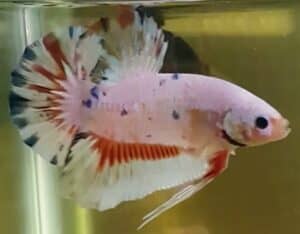
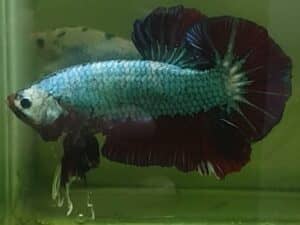
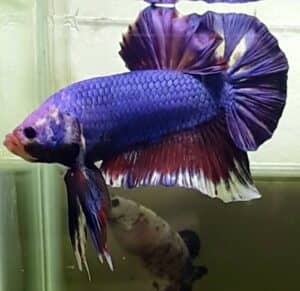
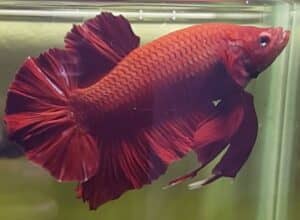
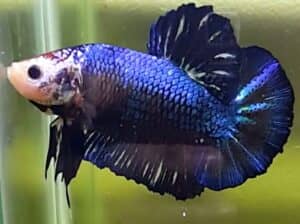

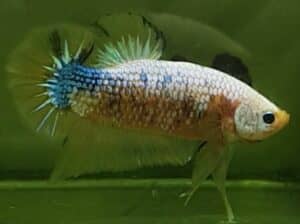


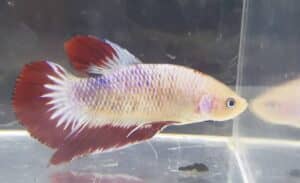
Also, see the guide on Elephant Ear Betta. They are one of the most beautiful freshwater fish you can buy. All these fish types are sale on local pet stores.
Read More : Elephant Ear Betta Care Complete Guide 2021 [Update]
Frequently Asked Questions
Is a king betta the same as a giant betta?
No. King betta and Giants betta belong to the same species. Actually, they are the same fish. A giant betta is a betta that grows exceeding the regular bettas. Usually, a giant betta’s body size is around 3.5-7.50 inches. King betta fish are more aggressive than giant betta fish because they are selectively bred for fighting. So a King betta is likely to be more aggressive than a giant betta. In general, their pigments are vivid beige to white. King betta female fish are less colorful than males. King betta’s lifespan is short, usually 2–3 years, rarely exceeding four. The King betta is a member of the Osphronemidae
How to Identify Betta anabantoides
their large body size usually places them. They typically grow between 3 – 6 inches.
how Betta anabantoides acclimate
They should be acclimated to normal betta fish. Check the proper pH and temperature at the bare minimum. Betta fish are highly sensitive to environmental changes, and any sudden changes in water parameters or temperature could cause too much stress for them. Stress contributes to shock, and disease susceptibility and could even cause death.
Giant betta plakat
Giant plakat fish has the same body feature as plakat betta fish. But they have a large body size and fins.
Do giant betta jump out of the tank?
You’ll be shocked to know that the jumping out of the tank can jump out of their tank. This is common when the tank is too small, bad water quality, and A Poor Sleep Cycle.You need to maintain proper water quality and plant a few plants in the fish tank.
Read more What is a koi betta? | Koi Betta Care Tips You Must Know
Betta anabantoides male or female
Their male betta and female betta are similar to regular betta; there are no changes in that department.
How big is a king betta?
King betta’s body size is around 2–2 1/2 inches. In other words, king betta is an aggressive betta fish.
I have seen a king betta which is 3inches long. The King betta is a member of the gourami (Osphronemidae) family (as are all other bettas) and prefers a temperature of 78-82 °F.
Are King Bettas more aggressive?
Yes, giant betta fish are aggressive when compared with others. But it mostly depends on individual fish. Most of the king betta are selectively bred for fighting, so they are more aggressive and more colorful.
Also, see the guide on betta fish identification
Read more Why Betta Fins Shredded Overnight? [SOLVED]
Read more Wild Betta Fish: The Beautiful, and Rear | All you need to know.
1st SOURCE
2nd SOURCE
3rd SOURCE
5th SOURCE
6th SOURCE

Where can I purchase a giant betta? Are they able to be put with other giants? Are they a community fish?
you can find them in your local pet store. but they are not compatible with other male betta fish
Chad, Petco giant bettas are not the same as real Giant Betta fish. They are of different strain and can only grow a maximum of 3-4″. You will need to find Giant Betta dealers from Thailand. Best place to find them is facebook by searching for them. There are a few on there that are pretty active.
So can giants be bred with regular size females?
yes you can